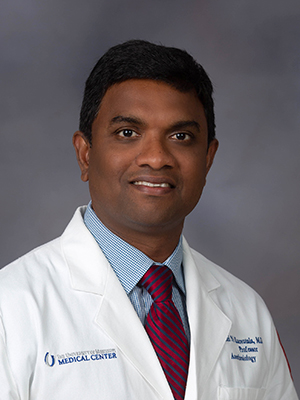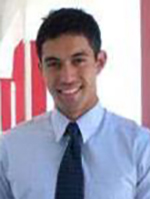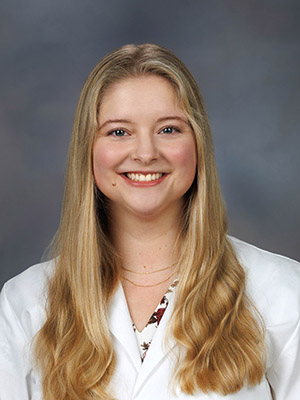Winter 2019
- The Pulse - UMMC Anesthesiology - Archive
- Fall 2025
- Spring 2025
- Winter 2025
- Spring 2024
- Winter 2024
- Fall 2023
- Spring 2023
- Winter 2023
- Fall 2022
- Spring 2022
- Winter 2022
- Fall 2021
- Spring 2021
- Winter 2021
- Fall 2020
- Spring 2020
- Winter 2020
- Fall 2019
- Spring 2019
- Winter 2019
- Fall 2018
- Spring 2018
- Fall 2017
- Winter 2017
- Winter 2026
Kurnutala Provides Successful Anesthesia for Awake Craniotomy in Young Adult
by Sara B. Robertson, M.D.

Hannah McCowan was a just a normal teenager enjoying her freshman year of college at Ole Miss until several strange symptoms culminating in a seizure led her and her parents to the discovery of a brain tumor. And this was not just any brain tumor…one located in a very important area of the brain affecting speech and motor function. Dr. Lakshmi N. Kurnutala, one of our adult anesthesiologists, and one of our anesthesia residents, Dr. Dennis Marcelo, were called upon to provide the anesthesia for Hannah for an awake craniotomy, which is the preferred method of removing an intracranial lesion when it involves Broca’s (speech) area.

Because the patient expressed fear of needles, an IV was placed after an inhalation induction in the operating room. A scalp block was done by neurosurgery. She had monitored anesthesia care (MAC) with sedation and was awakened mid-surgery to participate in speech testing by naming different pictures. Upon completion of cortical mapping and tumor resection, the patient was re-anesthetized for surgical closure. Hannah is now in her junior year of college and is doing very well!

Hannah is the daughter of Dr. Timothy McCowan, Chair of Radiology at UMMC, and Dr. Nancye McCowan, Professor of Dermatology and the Dermatology Residency Program Director at UMMC. I sat down with her father a few weeks ago to get his perspective on his daughter’s surgery and how the anesthesia made a huge difference in how she viewed her surgery.
Tell us about yourself/your daughter and a little about your family.
She’s our only child. She graduated from Jackson Academy and now is at Ole Miss. She just finished her first semester of her junior year and is majoring in chemistry and biology for the pre-med track.
How did you discover that your daughter needed brain surgery? What were the presenting symptoms of the brain tumor?
I was on my way to Grenada for a meeting, and I get this phone call from my wife saying Hannah just had a grand mal seizure and is in an ambulance on the way to the emergency room. When I got to the Oxford ER, she was awake and a little disoriented. She had a CT scan which didn’t show anything obvious. Then they did an MR, and there was an obvious intra-parenchymal brain mass. We immediately drove her to UMMC to see the neurosurgeon, Dr. Roberto Rey-Dios. In retrospect, her junior year of high school she came home and said she was doing an assignment in class and was awake but felt paralyzed. One other time her freshman year of college, she also said she was blind for a minute at a stop light. These symptoms were so nebulous so we didn’t think anything of it.
What were your reactions when you were told this needed to be an awake craniotomy?
It was scary obviously! Because of the area of the brain we were told it would have to be awake. Being a medical professional is a blessing and curse in this situation—we understood the significance of the situation at that level but it was also incredibly frightening. She was more concerned about shaving her head and also had a paralyzing needle phobia. We did do some counseling and lots of imaging. It was definitely a trying time.
How would you describe the care that Dr. Kurnutala and the department of anesthesiology provided to you before, during, and after your surgery?
Kudos to Dr. Kurnutala and the whole anesthesia team. It makes you appreciate the importance of anesthesia in this circumstance. I don’t think she would have gone through with the surgery without all the care on the front end of placing the IV after going to sleep. She was extremely complimentary of the anesthesia. Y’all have been phenomenal and so incredibly helpful.
Any issues in the post-operative period? Follow-up care?
She had a lot of post-operative discomfort initially and had some receptive aphasia for a few days after surgery but resolved quickly. She still has a focus on her EEG and for that reason, she is still on her seizure medication. We are still not clear on the pathology of the tumor even after sending it to three different pathologists. She still has a needle phobia but is so much better after this experience. She’s been scanned two or three times since the surgery, and everything looks great!
I also was able to have Dr. Kurnutala talk about how he prepared for the challenges of this case.
Tell us a little about the anesthetic plan for the patient considering this was an awake craniotomy? What were your main anesthetic concerns and how did you address those both with the family and during the surgery itself?
An awake craniotomy is the preferred method of removing brain lesion when it involves the eloquent cortex (Speech area – Broca’s area, Wernicke’s area, and Motor cortex). It allows for maximal tumor resection, improves survival and lowers complication rates. During the preoperative evaluation, the patient reported that she had a fear of needles (needle phobia) and was more anxious about the placement of the IV, arterial line and foley catheter than the actual surgery. I discussed with the patient and family about the different options of anesthesia and assured the patient no needles while she was awake. In the operating room, standard ASA monitors were connected, inhalational induction was performed in order to establish IV access, invasive arterial blood pressure monitoring, and the urinary catheter.
Please discuss the pain management strategy for the patient?
MAC anesthesia and analgesia was provided with propofol/remifentanil during the pre-mapping portion of the surgery. A scalp block with local anesthetic was performed by neurosurgery for pain relief.
How does this surgery differ from other neurosurgery procedures?
Awake craniotomies are increasing in popularity, and there has been much debate over which anesthetic method is optimal in various situations. Proper patient selection, preparation, preoperative evaluation and a team approach are vital to the success of the procedure. The patient must be able to communicate with the anesthesiologist and surgeon during critical portions of the surgery. The anesthesiologist plays a major influential role by discussing the risks, benefits, and alternatives of different options of anesthetics with the patient and family to relieve the anxiety preoperatively. We must also follow up with the patient post-operatively after this specific surgery to understand the complications related to anesthesia and surgery and also to provide supportive care to the patient and family.
If you could have done anything differently for this case, what would it have been and why?
If the patient had not been cooperative during the awake phase of surgery, we should have called the family to video chat with the patient to reduce anxiety and make the patient comfortable to continue the surgery to give better outcome. However, Hannah did a fantastic job throughout the awake portion of the surgery so that technique was not necessary.
In future editions of the newsletter, we will be highlighting unique and challenging cases in which our anesthesia team has provided excellent care. Congratulations to all involved in this case!


